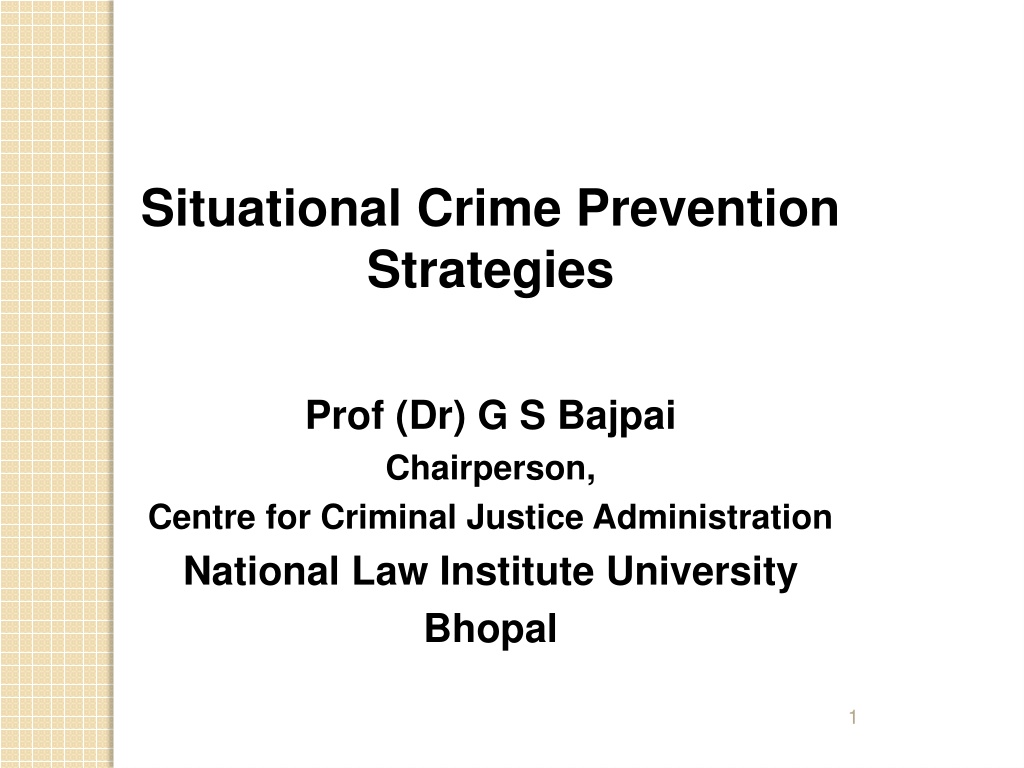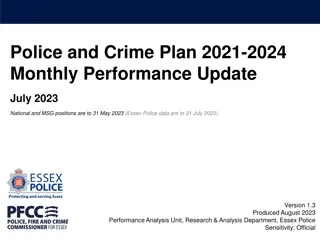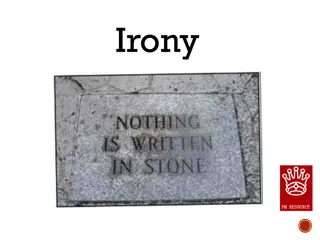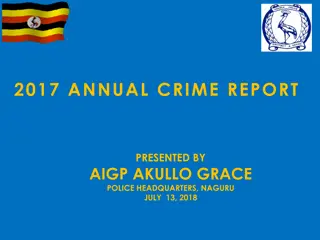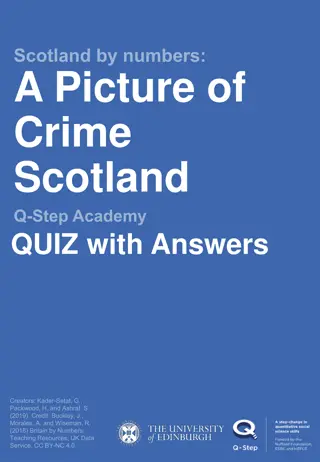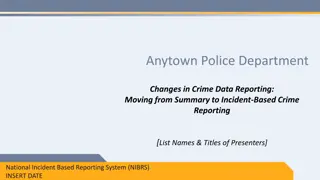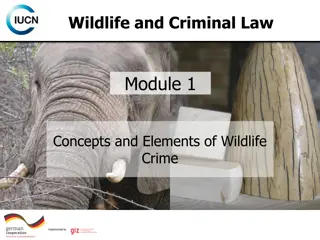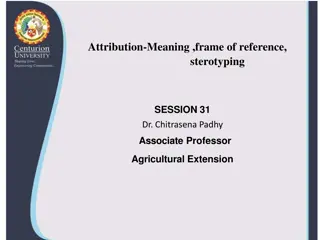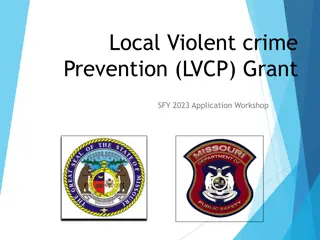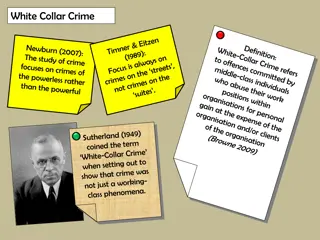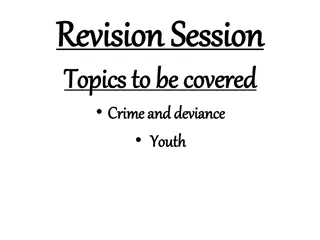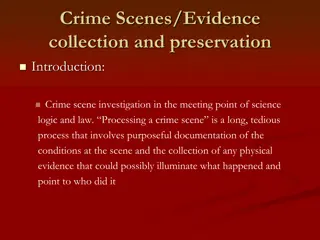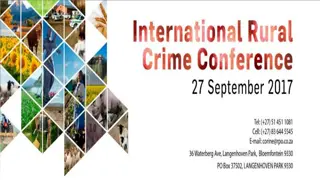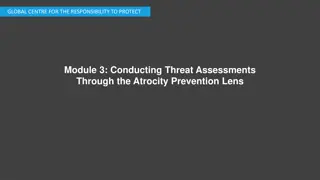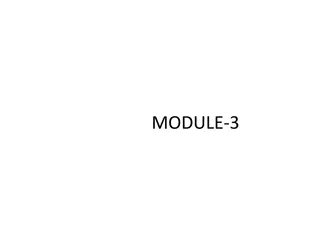Understanding Situational Crime Prevention Strategies
Situational crime prevention strategies aim to reduce crime by altering environmental conditions, influencing offender decisions, and targeting crime opportunities. Primary prevention focuses on modifying physical and social environments, while secondary prevention aims to identify potential offenders early. Tertiary prevention involves dealing with actual offenders. By changing criminal motivations and reducing crime opportunities, SCP seeks to prevent crime before it occurs, emphasizing the importance of new crime theories that focus on events rather than dispositions. Various ways, such as increasing effort and risk for offenders, reducing rewards and provocations, and removing excuses, can modify situations to prevent crime effectively.
Download Presentation

Please find below an Image/Link to download the presentation.
The content on the website is provided AS IS for your information and personal use only. It may not be sold, licensed, or shared on other websites without obtaining consent from the author. Download presentation by click this link. If you encounter any issues during the download, it is possible that the publisher has removed the file from their server.
E N D
Presentation Transcript
Situational Crime Prevention Strategies Prof (Dr) G S Bajpai Chairperson, Centre for Criminal Justice Administration National Law Institute University Bhopal 1
Crime Prevention Intervening in the causal chain to prevent crime from occurring at all 2
Types of Crime Prevention Primary prevention Effecting conditions of the physical and social environment that provide opportunities for or precipitate criminal acts. Secondary prevention Engages in early identification of potential offenders and seeks to intervene before the commission of illegal activity Tertiary prevention Dealing with actual offenders and intervention 3
Two ways to prevent crime 1. Change people s criminal motivations 2. Reduce opportunities for crime 4
Situational crime prevention (SCP) Primary crime prevention. 1. The art and science of reducing opportunities for crime 2. Based on new crime theories: Rational choice Routine activity 3. 5
SCP seeks to influence the offender s decision or ability to commit crimes at particular Places and times by way of particularly designed measures.
Focus of New Crime Theories Crime, not criminality Events, not dispositions Near, not distant causes of crime How crime occurs, not why it happens Situational and opportunity factors 7
5 Ways to Modify a Situation Increasing the effort the offender must make to carry out the crime. Increasing the risks the offender must face in completing the crime. Reducing the rewards or benefits the offender expects to obtain from the crime. Reducing or avoiding provocations that may tempt or incite offenders into criminal acts Removing excuses that offenders may use to rationalize or justify their actions. 8
Reducing Opportunity Criminal opportunity is reduced by: Increasing the effort involved in crime by making the targets harder to get at or hindering the commission of crime (e.g., target hardening, access control, exit and entrance screening) Increasing the risks, whether real or perceived, of detection and apprehension (e.g., surveillance, screening, profiling) Reducing the rewards of crime, (e.g., target removal, property marking, merchandise ink-tags)
Reducing Opportunity Reducing or avoiding provocations that may tempt or incite offenders into criminal acts Removing excuses that offenders may use to rationalize or justify their actions.
Reducing Opportunity Opportunity for crime can be reduced directly & indirectly: Directly: organizing the immediate physical environment (e.g., target hardening, access control, target removal) (i) Indirectly: organizing people to foster or reinforce their individual and collective behaviour to minimize their vulnerability to crime (e.g., Neighbourhood Watch) (ii)
SCP involves the management, design, or manipulation of the immediate physical environment Primary objective: reduce the opportunity for criminal activity Opportunity for reducing crime can be pursued by: (i) organizing the immediate physical environment or (ii) organizing individuals (e.g., Neighbourhood Watch)
Triangle when a crime occurs, three things happen at the same time and in the same space: a suitable target is available. there is the lack of a suitable guardian to prevent the crime from happening. a motivated offender is present. 1. 2. 3.
Increase the Effort Harden Targets Control Access Screen Exits Deflect Offenders Control Tools/Weapons 15
Increase the Risks Extend guardianship Assist natural surveillance Reduce Anonymity Utilize place managers Strengthen formal surveillance 16
Reduce the Rewards Conceal targets Remove targets Identify property Disrupt markets Deny benefits 17
Reduce the Provocations Reduce frustrations and stress Avoid disputes Reduce emotional arousal Neutralize peer pressure Discourage imitation 18
Remove the Excuses Set Rules Post instructions Alert conscience Assist compliance Control drugs and alcohol 19
Broken Windows Theory Minor incivilities, if unchecked and uncontrolled, will promote more serious crimes Incivilities act as the catalyst: they represent signs of disorder and signify that 'no one cares', that the environment is uncontrolled and uncontrollable Solution: stop and reverse the cycle of decline in its earliest stages by a focus on order maintenance and aggressive policing of incivilities and other signs of crime.
Problem oriented policing (POP) http://www.popcenter.org
Online Exercise Complete the 25 Techniques Module at http://www.popcenter.org/25techniques.htm 22
POP and SCP - SIMILARITIES Both are preventive approaches; one is defined within policing while the other is not Both originated in the 1970 s, SCP in the UK and POP in the USA Both focus on highly specific problems Both use action research models 23
Actionresearch SCP Data collection Analysis of problem Choice of solution Implementation Evaluation POP Scanning Analysis Response Assessment 24
POP vs. SCP - DIFFERENCES SCP POP Origins: Crime theory Origins: Police management theory Focus: Crime and disorder problems Focus: Police and community problems Implemented by an agency with a crime or disorder problem Implemented by police Well-evaluated Widely implemented 25
Importance of the 25 Techniques Help to systematize our knowledge Provides a stimulus for research The techniques may overlap - Increasing efforts can also increase risks Some preventive measures can serve more than one purpose Best used to help further thinking at the Response phase of the SARA process 26
Limitations Not all techniques are equally suitable for all types of crimes. For example: Removing excuses may be most effective for dealing with everyday crimes Reducing provocations may be most effective in closed environments 27
Exercise 1 Take a walk on campus (or throughout your city) and identify some places/areas that might benefit from situational crime prevention. Using the 25 techniques of SCP, write up a summary of recommendations for improving those areas and reducing the likelihood of criminal activity. 28
Exercise 2 Identify/devise some low-cost situational crime prevention methods that would make a college dormitory more secure. 29
Exercise 3 In an effort to maximize effectiveness, try to match each of the 25 techniques to a specific crime or disorder problem. Explain your rationale. 30
Online/Group Exercise Using the 25 Techniques, break into groups and develop two crime prevention techniques from each of the five categories (a total of 10) for one of the following crime problems: Drunk driving Assaults at public place Robbery Delinquency Shoplifting Disorderly youth at public place Theft of vehicles Street prostitution 31
